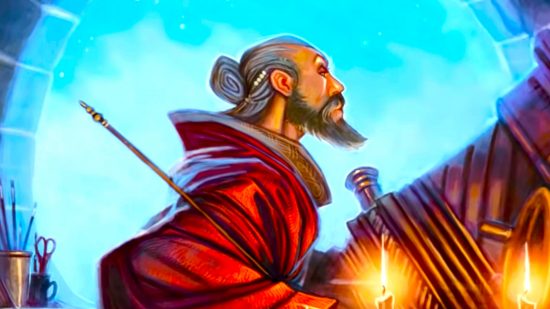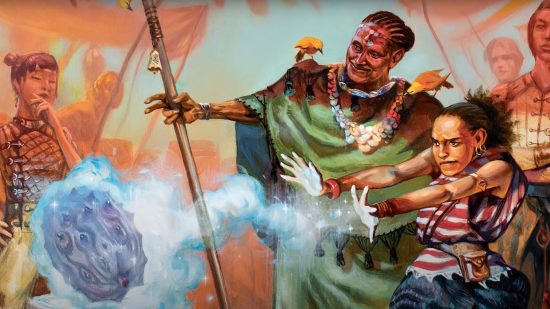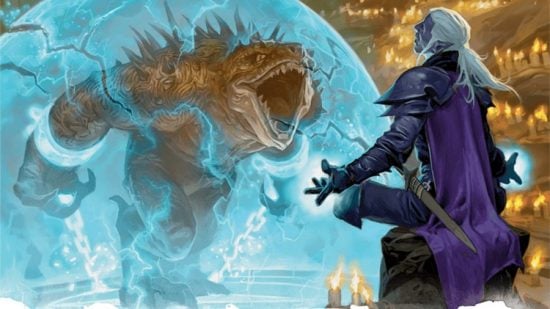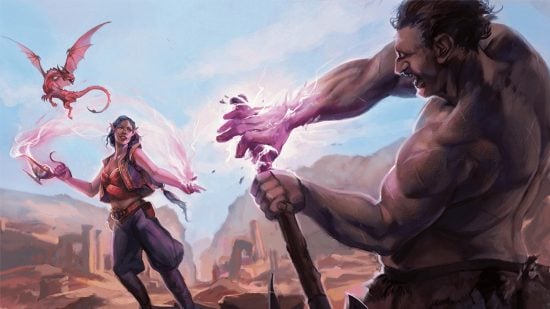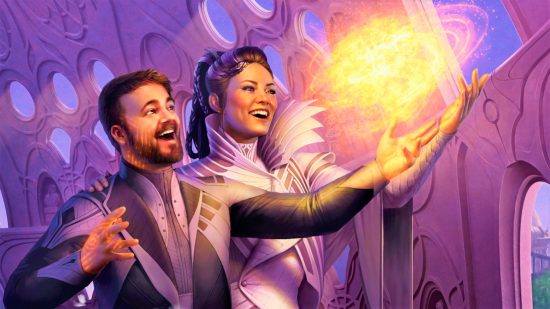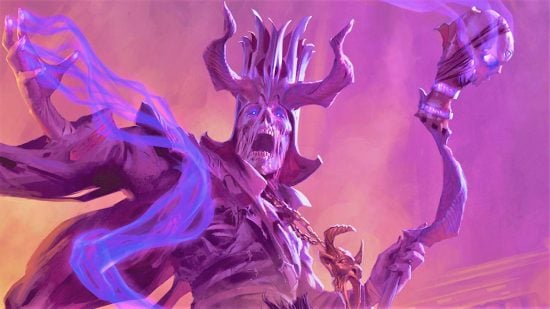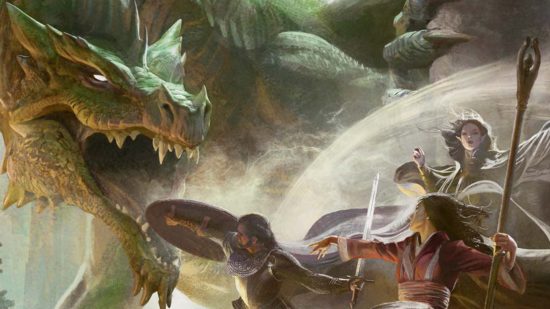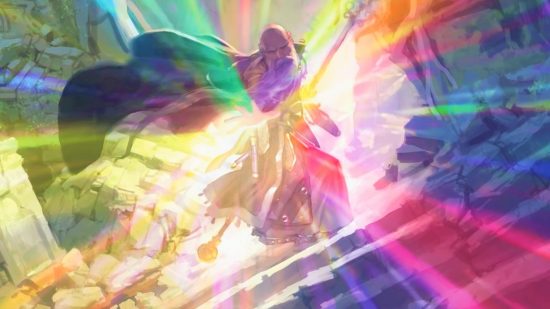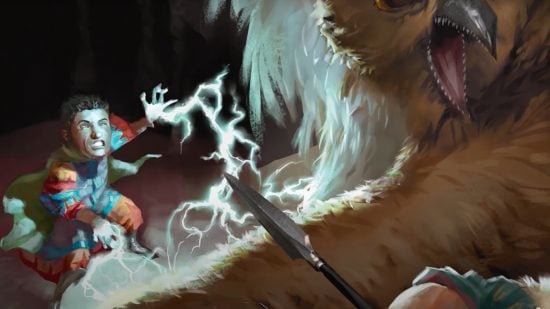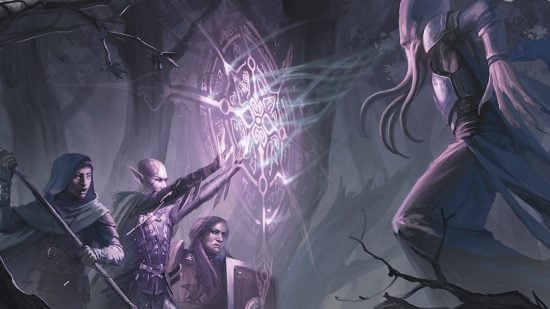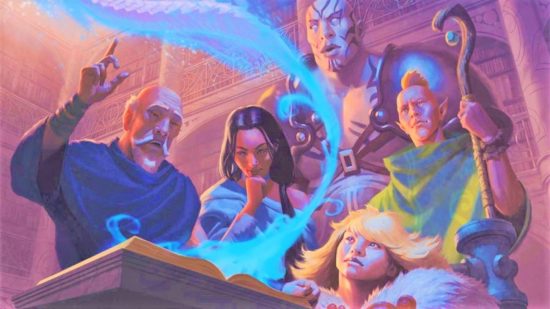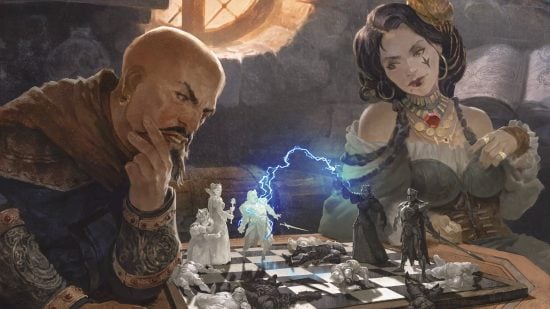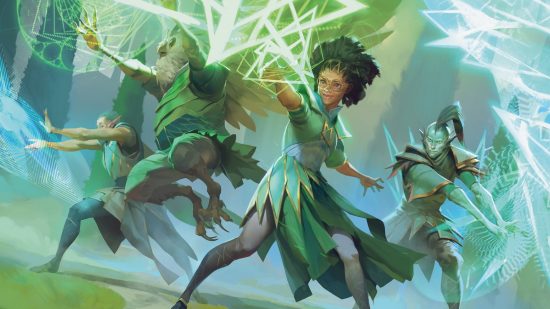With 13 official DnD Wizard subclasses to choose from, there’s a near-endless amount of possible builds for your pointy-hatted Dungeons and Dragons character. How’s a spell-loving player to choose their perfect school of magic? With a ranked list of Wizard subclasses 5e, of course.
We’ve sorted the strong DnD Wizards from the weak, the complex DnD classes options from the simple, and the combat-focused from the lovers of roleplay and utility. Armed with this knowledge, you’ll be ready to face your next challenge – deciding what to pick from the DnD Wizard spells list.
From worst to best, here are the DnD Wizard subclasses 5e ranked:
- 13. School of Transmutation
- 12. Graviturgy Magic
- 11. School of Conjuration
- 10. Bladesinging
- 9. School of Enchantment
- 8. School of Necromancy
- 7. War Magic
- 6. School of Illusion
- 5. School of Evocation
- 4. School of Abjuration
- 3. Order of Scribes
- 2. School of Divination
- 1. Chronurgy Magic
13. School of Transmutation
Found in: Player’s Handbook
A School of Transmutation Wizard is cursed with mediocre abilities – many of which are simply done better by other classes at lower levels.
Minor Alchemy is a highly situational ability that’s only useful if your DM is very lenient with creative suggestions. Transmuter’s Stone offers some useful battle buffs, but it doesn’t feel potent or unique enough to wait until sixth level for. And Shapechanger is a tenth-level ability that just feels like Wild Shape 5e but worse.
If you do make it to 14th level, your Transmuter’s Stone ability expands, allowing you to transmute non-magical objects, remove curses and diseases, raise the dead, or de-age a creature. It’s pretty cool, but we wouldn’t recommend sticking with the subclass long enough to see it.
12. Graviturgy Magic
Found in: Explorer’s Guide to Wildemount
While literal power over gravity sounds magnificent, the Graviturgy Magic subclass is too situational to really recommend.
Adjust Density can give a nice speed boost or buff a grapple 5e, but its concentration requirement makes this much less appealing. Gravity Well lets you move the target of a spell five feet, and Violent Attraction can add extra damage die to falls or DnD weapon attacks. Both, however, trigger in quite specific situations, so their benefits are neither consistent nor guaranteed.
Finally, level fourteen’s Event Horizon is another concentration-based ability with several hoops to jump through. Get a hostile target close enough and get it to fail its Strength saving throw, and you can reduce its speed and deal 2d10 force damage. Which isn’t bad, but takes a lot of setup (and requires your squishy Wizard to be in the middle of battle).
11. School of Conjuration
Found in: Player’s Handbook
The School of Conjuration lets your Wizard summon increasingly useful objects and allies to make fighting and adventuring easier. This isn’t a particularly flashy subclass, but it can be a satisfying build for lovers of utility, creative problem-solving, and sending summons to do your dirty work for you.
Minor Conjuration gives you the freedom to summon any small, ordinary object you might think useful, and Benign Transposition lets you teleport once per long rest 5e when you hit level six. Later, Focused Conjuration makes it easier to concentrate on Conjuration spells, and Durable Summons gives your conjured creatures 30 temporary hit points.
This is rarely the subclass of power builders. However, the right player in the right campaign will find plenty of roleplay and combat value here.
10. Bladesinging
Found in: Tasha’s Cauldron of Everything / Sword Coast Adventurer’s Guide
A Jack of all trades and master of none, the Bladesinging Wizard tries to master melee fighting and Intelligence-based spellcasting. Unlike the more successful Eldritch Knight 5e, the Bladesinging subclass doesn’t really succeed at either.
DnD armor proficiencies and an armor class boost just aren’t enough to save the Bladesinging Wizard from its abysmal hit point maximum. Bladesong offers several powerful buffs to your agility, and an extra attack at sixth level is great, but these things a battle-ready Wizard still do not make. Song of Defense does a lot to counteract your puny HP, and Song of Victory massively increases your damage potential, but these higher-level abilities come very late.
A careful DnD character build with some defensive spells can make Bladesinging a viable subclass. But several classes and subclasses do the magic-and-martial mix much better.
9. School of Enchantment
Found in: Player’s Handbook
If you’re in a roleplay-heavy campaign or you love to moonlight as the Face of the party, the School of Enchantment is an excellent choice. You might not be the traditional Wizard other players expect you to be, but you’ve got plenty of useful (if unconventional) spells and abilities to bring to the table.
Hypnotic Gaze is a quick and easy way to charm adversaries, and Instinctive Charm makes you so beguiling that DnD monsters feel compelled to attack someone else. At later levels, Split Enchantment lets you target two creatures with the same Enchantment spell, and Alter Memories makes creatures forget your magical attempts to manipulate them.
Still, until 14th level, everyone will remember your unsavory attempts to influence them. This, combined with how often creatures are immune to being charmed, means you may often get your team into hot water. And if you do, you’re not the most combat-savvy of spellcasters.
8. School of Necromancy
Found in: Player’s Handbook
Arguably a more flavorful version of Conjuration, the School of Necromancy revolves around your ability to raise and command the dead. You won’t be able to do this until you learn Animate Dead (either yourself or with the sixth-level Undead Thralls ability), but the subclass is supported by some interesting spells that’ll tide you over until then.
Aside from its summoning abilities (Grim Harvest and Command Undead at level 14), the subclass focuses on buffing you via the essence of death. However, Necromancy Savant and Inured to Undeath both feel a little situational. You’ll need to deal the killing blow to regain hit points with Grim Harvest, and the usefulness of necrotic damage resistance will really depend on your DnD campaign.
We love a subclass with a dark side, and there’s plenty of merit to the School of Necromancy. However, it’s far from our favorite Wizard subclass.
7. War Magic
Found in: Xanathar’s Guide to Everything
As the name implies, War Magic is a Wizard subclass that focuses on combat prowess. Its abilities are designed to make you hit harder and harder to hit.
The second-level Arcane Deflection ability gives your Wizard a much-needed bonus to armor class and saving throws in battle, and Tactical Wit buffs your initiative. At level six, Power Surge gives you a new resource to manage which boosts the damage of your spells. Durable Magic further boosts AC and saving throws, and Deflecting Shroud turns Arcane Deflection into a damage-dealing machine.
There’s a nice mix of offense and defense here, and War Magic solves a lot of problems for a combat-happy Wizard. However, there’s very little support for non-combat situations. And overall, the subclass doesn’t do much that makes it really stand out from the existing Player’s Handbook subclasses.
6. School of Illusion
Found in: Player’s Handbook
The School of Illusion is all about utility, and it’s incredibly rewarding for creative players. Each subclass feature focuses on buffing your illusory spells, meaning you can magic your way out of almost any scenario (probably not combat, though).
Improved Minor Illusion buffs your best DnD cantrip at level two, and Malleable Illusions later gives you more flexibility with what illusions you create. Illusory Self lets you create distracting clones of yourself at level ten, and Illusory Reality eventually gives you the power to create illusions that feel really real.
Combine these broad abilities with the vast and varied Illusion spell list, and you’ve got a Wizard subclass with endless possibilities for utility. Creative solutions do often mean a more complex playstyle, though – so perhaps beginner Wizards would do better with a simpler subclass.
5. School of Evocation
Found in: Player’s Handbook
If you want to cast Fireball 5e at every possible opportunity, the School of Evocation is the only choice. Playing an Evocation Wizard is the D&D equivalent of only teaching attack spells to your Pokémon. It’s a simple option and might not be the most powerful overall, but it’s easy to understand and feels great.
The second-level Sculpt Spells ability protects a certain number of allies from taking friendly fire damage (“I cast Fireball in a small room” will make you far less unpopular now). Potent Cantrip guarantees at least some damage is dealt by your pot shots, and Empowered Evocation adds your Intelligence modifier to Evocation spell damage rolls. Lastly, Overchannel ensures spells up to fifth level deal max damage.
Crunchy builders will usually stay away from Evocation, and there’s not much to work with outside of combat or setting buildings on fire. But this is a very beginner-friendly subclass. Plus, there’s no denying how satisfying it feels to hit and hit hard – just ask the DnD Barbarian.
4. School of Abjuration
Found in: Player’s Handbook
The School of Abjuration is all about defense and reaction. You’re a master of Counterspell 5e who can save everyone’s hides in a variety of ways. The subclass’ narrow focus can feel a little repetitive to play, but it’s a powerful choice for all its simplicity.
The second-level Arcane War ability is essentially magical bubblewrap, giving you a layer of magic with its own hit points that’ll protect you from harm. Projected Ward lets you spend a reaction to absorb an ally’s damage with your Arcane Ward, and Improved Abjuration adds your proficiency bonus whenever an Abjuration spell requires an ability check.
You’ll eventually be resistant to all spell damage and have advantage on spell saving throws. Your subclass abilities don’t do much to buff your offensive spells, but with how delicate a Wizard can be, defense is often the better choice. And Abjuration is the best defensive subclass there is.
3. Order of Scribes
Found in: Tasha’s Cauldron of Everything
The Order of Scribes subclass sets out to make a Wizard’s spellbook more interesting and useful. If you want as many spells as possible at your fingertips, this subclass is a better choice than any that focuses on a specific DnD school of magic.
As a Scribes Wizard, you start out with a magical quill that reduces the time it takes to copy 5e spells into your spellbook. This tome is now also sentient, can be used as an arcane focus, and allows you to reduce ritual casting time and switch the damage type of spells.
At later levels, you can conjure the awakened mind within this book, allowing you to hear and see from its position and cast spells as if you were there. You’ll also eventually learn to create spell scrolls and redirect damage to your beloved book.
More spells means more complexity, but that extra versatility is worth the payoff. This is flavorful and powerful subclass that’s worth trying.
2. School of Divination
Found in: Player’s Handbook
Being able to see into the future makes the School of Divination one of the most powerful subclasses in the game.
From level two, Portent allows you to replace attack rolls, saving throws, or ability checks with a pre-determined result of your own. Expert Divination at sixth level gives you a way to regenerate spell slots (which comes in very handy). Plus, The Third Eye grants you a huge number of utility options, including the ability to see invisible creatures and read any DnD language.
We can’t understate how ridiculous the power to change dice rolls is in a game of D&D. Arm yourself with enough Divination spells, and you’ll be able to predict almost anything your Dungeon Master wants to throw at you.
1. Chronurgy Magic
Found in: Explorer’s Guide to Wildemount
Giving you the power to shape time rather than just predict it, Chronurgy Magic is a more broken version of the Divination Wizard subclass. The level two Chronal Shift ability forces creatures to completely reroll their attacks and ability checks, which can be a game-changer in the most dire circumstances.
With boosted initiative rolls, the ability to incapacitate enemies with a magical forcefield, and the ability to cast delayed spells with tiny beads, you’re a force to be reckoned with in combat. With enough DnD level ups, you can quite literally decide the outcome of a die roll in exchange for a level of exhaustion 5e.
In a game where math rocks rule all, this subclass is as broken as it sounds. If you’re purely after power, look no further than Chronurgy Magic.
For more character options, here’s some handy guides to DnD races and DnD backgrounds. Or, for more rankings, here are which DnD Paladin subclasses and Fighter subclasses 5e we think are best.
